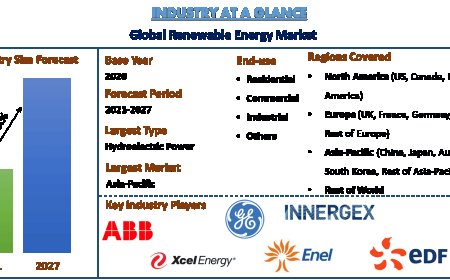8 Signs You’re Getting the Best Mortgage Refinance Rates
Getting the best mortgage refinance rates? Look for these 8 signs—including low fees, smart timing, and personalized terms—for a truly valuable financial move.

Clarity in Numbers: How to Know Youre Winning the Refinance Game
When youre refinancing your mortgage, its easy to get caught up in the hunt for the lowest interest rate. And yes, rates matterbut the best mortgage refinance rates go beyond numbers. A truly favorable refinance package reflects not just great pricing, but favorable terms, minimal fees, and alignment with your long-term financial goals. So how do you know the rate you've locked in is more than just good enough?
Here are eight signs youre getting a deal worth celebrating.
The Rate Is Lower Than Your Current Mortgage Rate
Lets start with the obvious: if the refinance rate is meaningfully lower than the rate on your existing mortgage, you're likely in a better financial position. Even a drop of 0.5% can reduce your monthly payment and shave thousands off the total interest paid over the life of the loan.
But dont rely on comparisons alonerun the numbers:
-
Use a mortgage calculator to see monthly savings
-
Compare total interest costs over the loans term
-
Factor in how long you plan to stay in your home
If the math supports a lower long-term cost, youre looking at a smart rate.
Your Annual Percentage Rate (APR) Isnt Dramatically Higher Than the Interest Rate
APR includes not just the interest, but also fees like discount points, closing costs, and loan origination charges. If your APR is only slightly above your interest rate, its a sign that lender fees are modest and youre not being nickeled and dimed in the fine print.
Check for:
-
Origination fees under 1%
-
Reasonable application and underwriting charges
-
No unnecessary or bundled services
Low fees and competitive terms signal that youre not just getting a good rateyoure getting good value.
You Qualify for Rate Discounts Based on Your Financial Profile
Some lenders offer discounted rates for borrowers with stellar financial metrics:
-
Credit scores above 740
-
Low debt-to-income ratios (below 36%)
-
Strong home equity (LTV of 80% or lower)
If youre seeing rate reductions due to your financial strengths, thats not just luckits optimization. It means lenders see you as low-risk, and youre benefiting from favorable pricing as a result.
You Didnt Have to Buy Down the Rate with Points (Or You Did, Strategically)
Sometimes borrowers purchase discount pointspaying an upfront fee to reduce their interest rate. Thats not a bad strategy, but if your lender offered a low rate without requiring points, youre already ahead.
Alternatively, if you chose to buy points and calculated the break-even time correctly (usually within five to seven years), and plan to stay in the home longer, youve maximized the benefit.
Strategic point usage shows that youve paired a smart rate with a smart payment plan.
The Rate Lock Came at Just the Right Time
Mortgage rates fluctuate daily. If you locked in your rate after a dipor ahead of a forecasted increaseyouve timed the market well. Many lenders allow you to lock rates for 30 to 60 days, and some even offer float-down options if rates drop further before closing.
Signs of savvy timing:
-
You locked in before inflation data or Federal Reserve announcements
-
You monitored weekly rate trends and captured a dip
-
You confirmed the lock period aligns with your expected closing date
Nailing your timing protects you from the risk of rising ratesand thats worth more than bragging rights.
Youre Refinancing into a Term That Aligns with Your Goals
Choosing the right loan term affects both your monthly payments and the interest rate. For example:
-
15-year loans usually come with lower rates but higher payments
-
30-year loans carry slightly higher rates but offer lower monthly costs
If your selected term matches your financial planwhether it's retiring early or keeping flexible cash flowyoure getting a refinance thats customized, not just competitive.
In short, the best rate is the one that fits your lifestyle.
Closing Costs Are Clear, Reasonable, and Dont Cancel Out Your Savings
A great refinance rate loses its luster if closing costs eat away all the savings. Watch for transparency in your Loan Estimate:
-
Are lender fees bundled or itemized?
-
Are third-party charges (title, appraisal) priced fairly?
-
Will you break even in two to four years, based on your monthly savings?
If youre confident that the upfront costs are justifiedand wont outweigh the benefitsyoure on the path to a financially sound refinance.
You Feel Confident and Informed, Not Rushed or Confused
One of the most overlooked signs of a great refinance rate? Clarity. If your lender explains everything clearly, answers your questions, and gives you time to compare offers, thats a strong indication that the rate and the experience are both above board.
Look for:
-
Straightforward communication (no pressure tactics)
-
Clear breakdown of rates, terms, and fees
-
Responsive service from application to approval
A transparent refinance process suggests your lender genuinely wants whats best for younot just to close the deal quickly.
Final Thoughts: Dont Just Chase NumbersChase Value
The best mortgage refinance ratesarent just the lowest availabletheyre the ones paired with the right terms, manageable costs, smart timing, and personalized support. When these signs start stacking up, youre not just refinancingyoure refining your financial future.
If you havent seen these signs yet, dont worry. Youre now armed with the awareness to shop smarter, ask sharper questions, and choose a refinance strategy that supports your long-term goals.






































